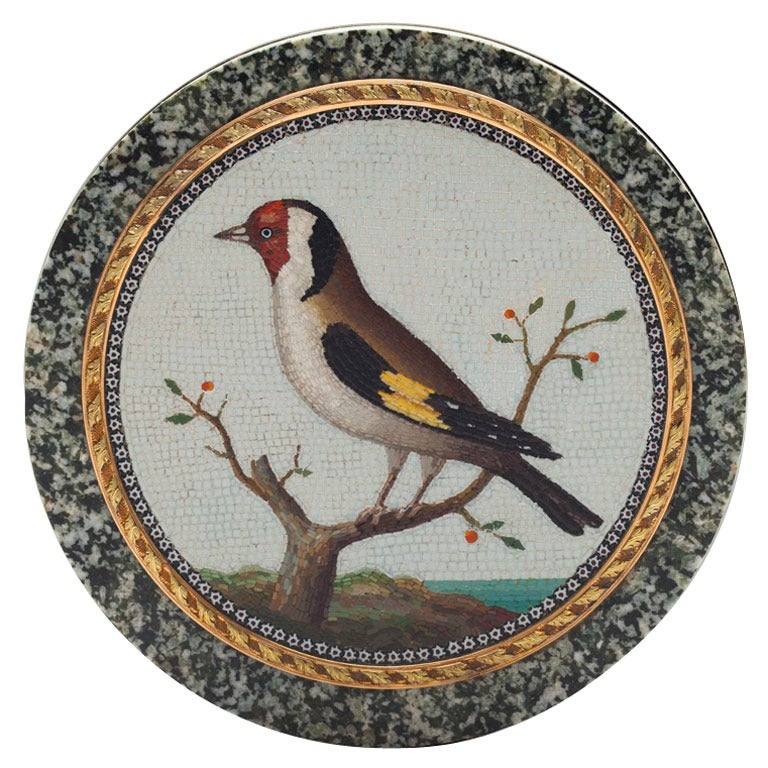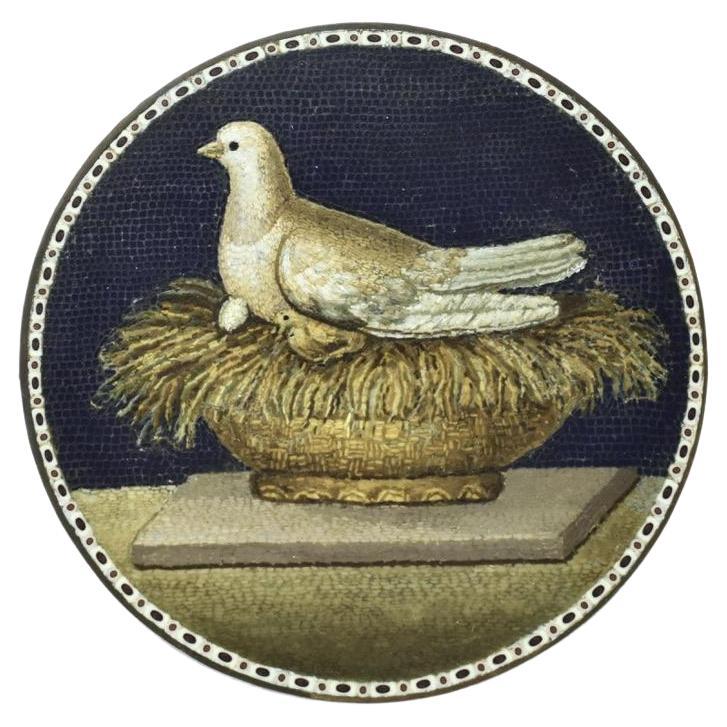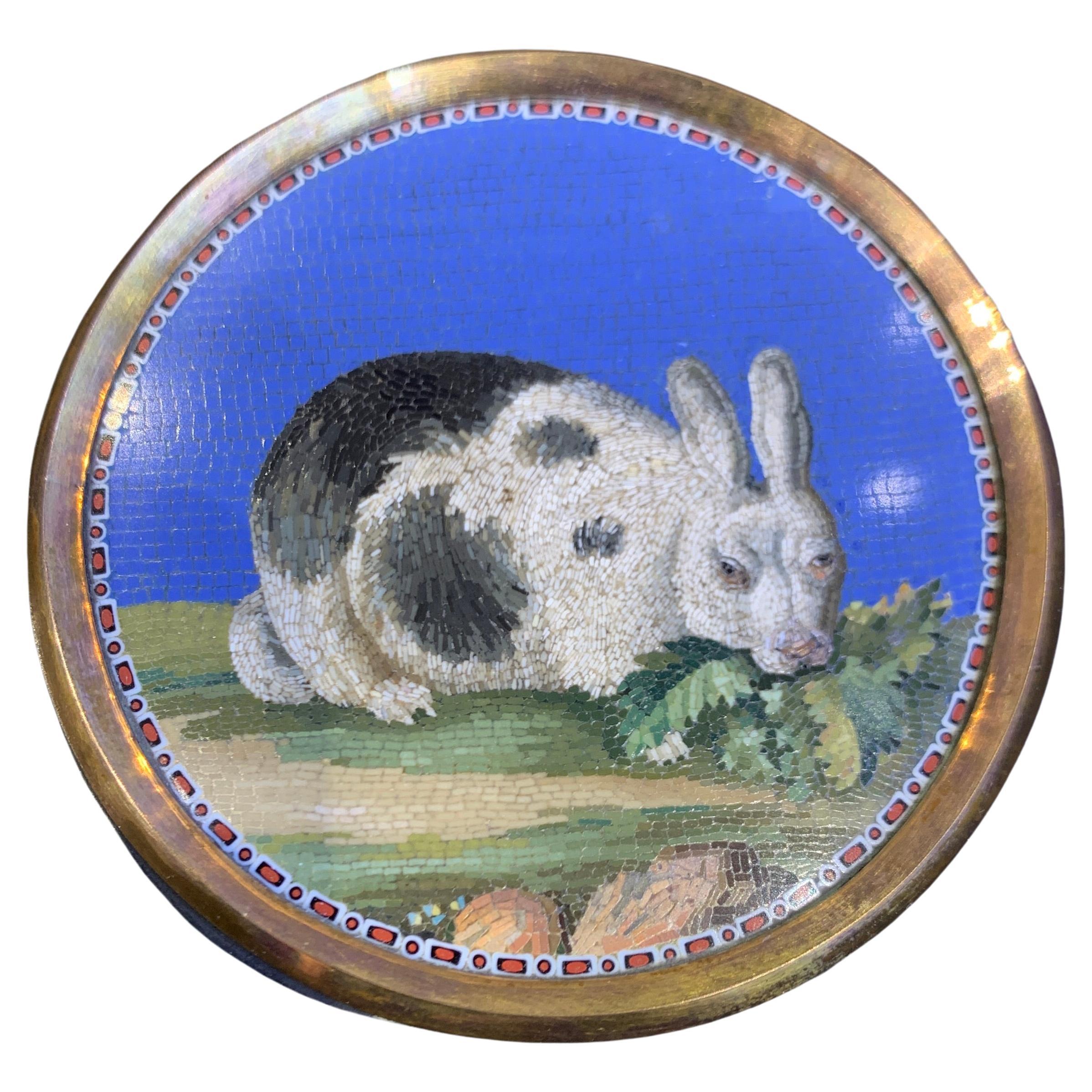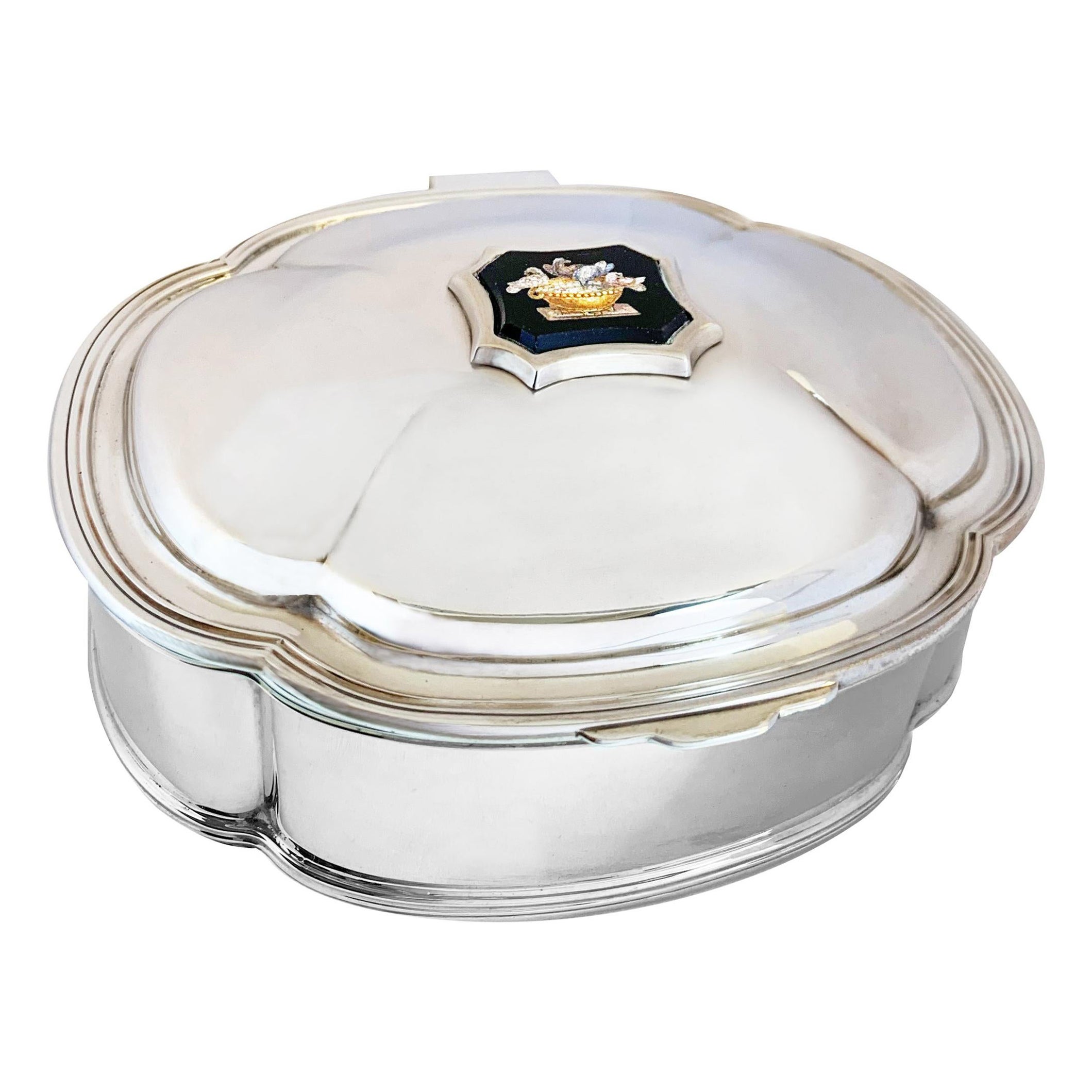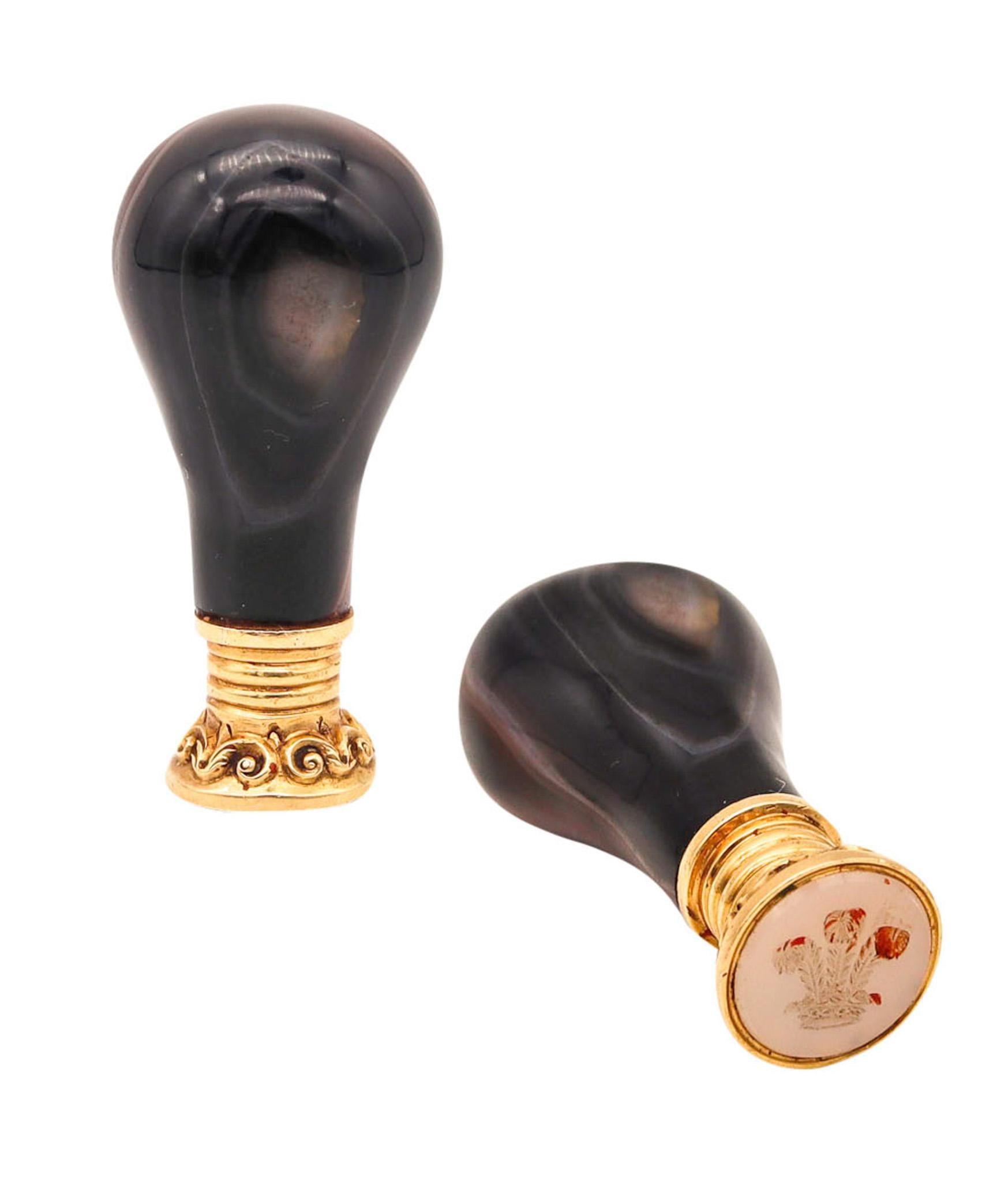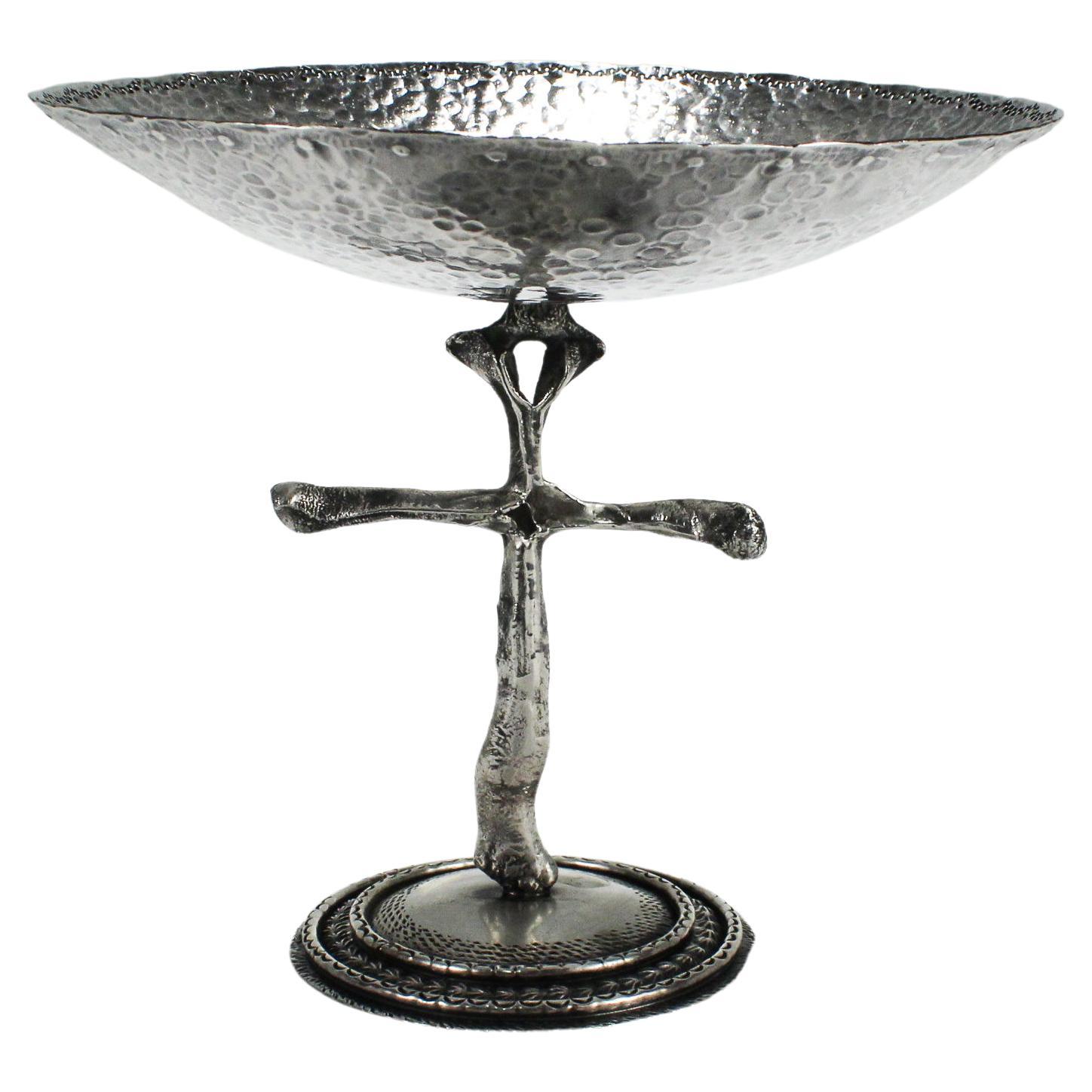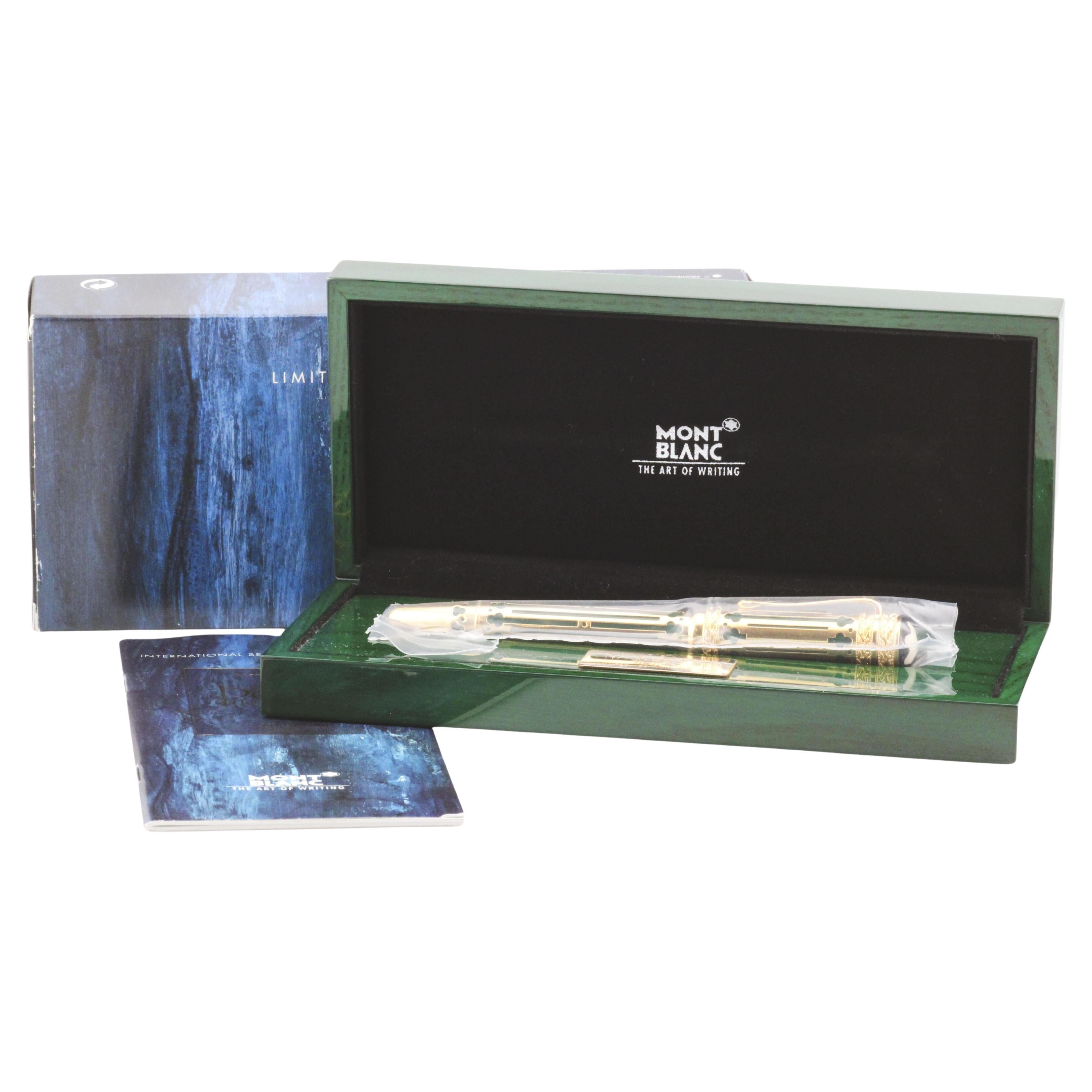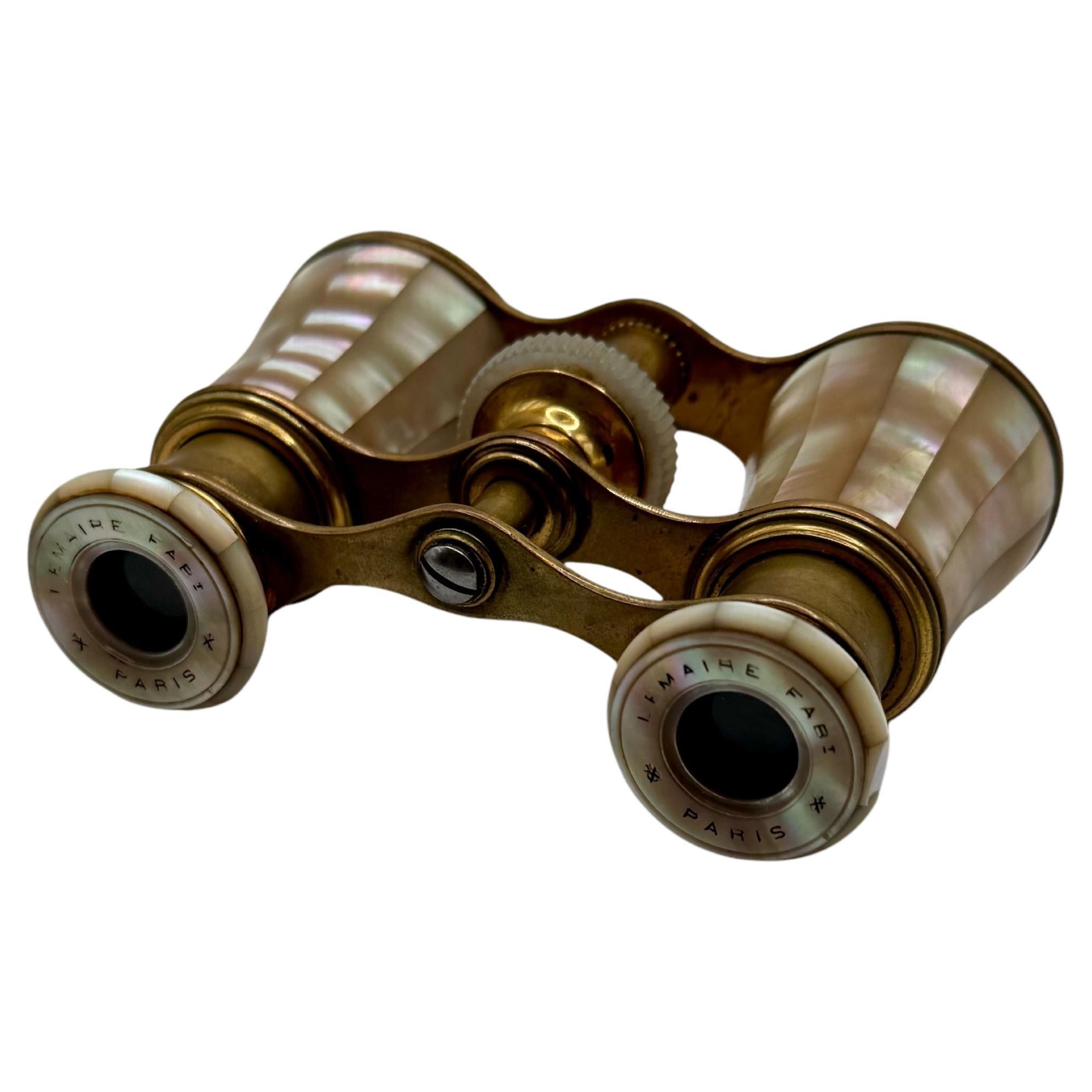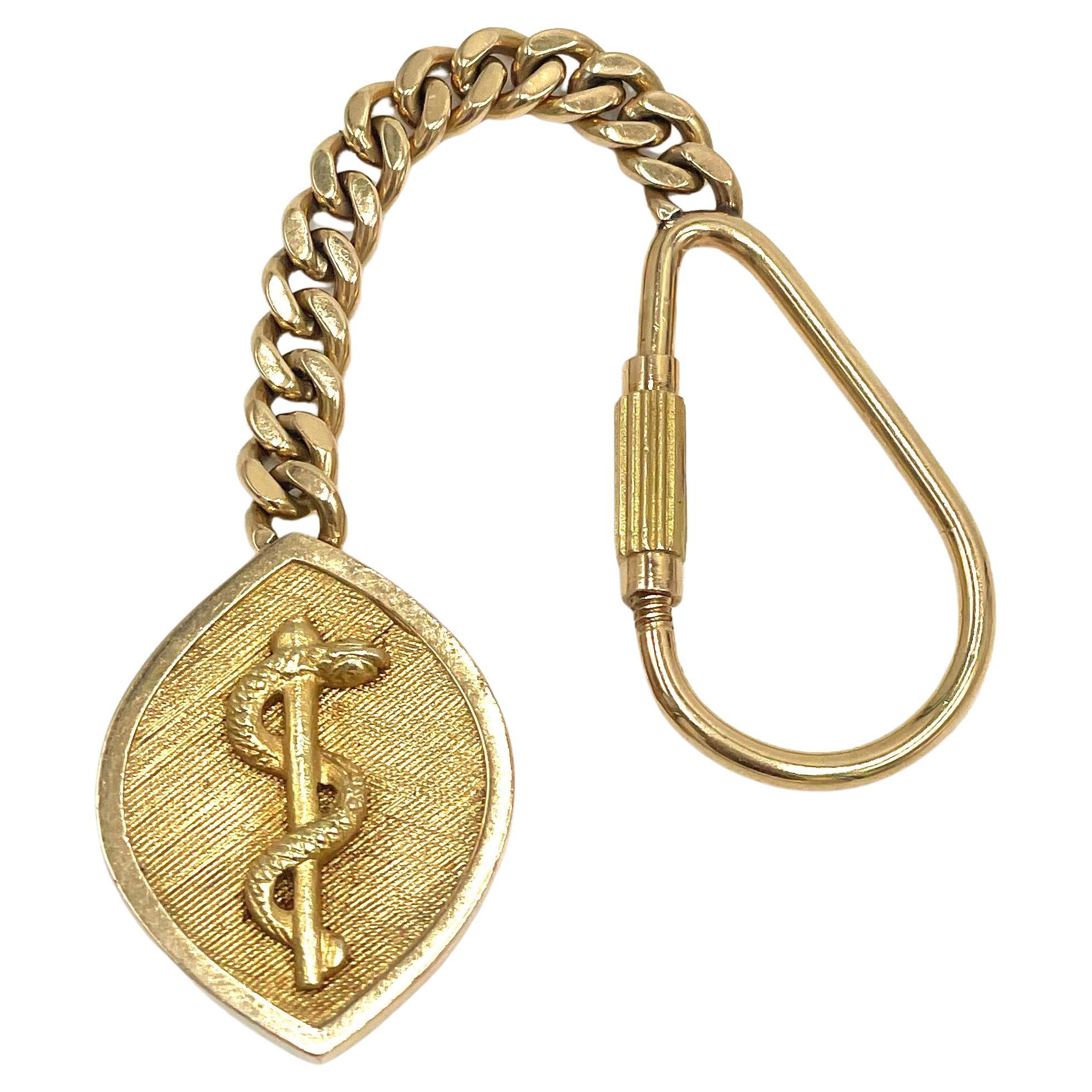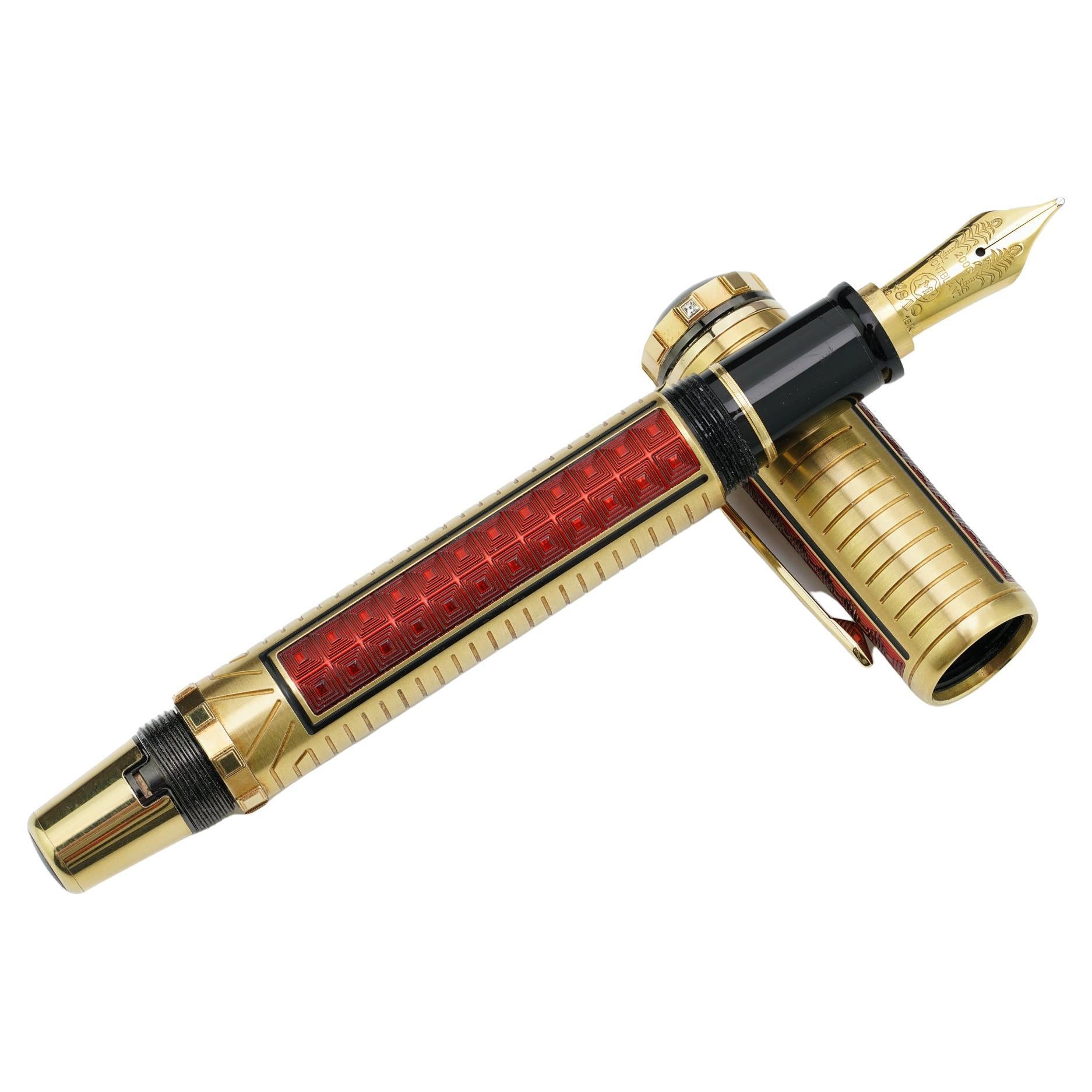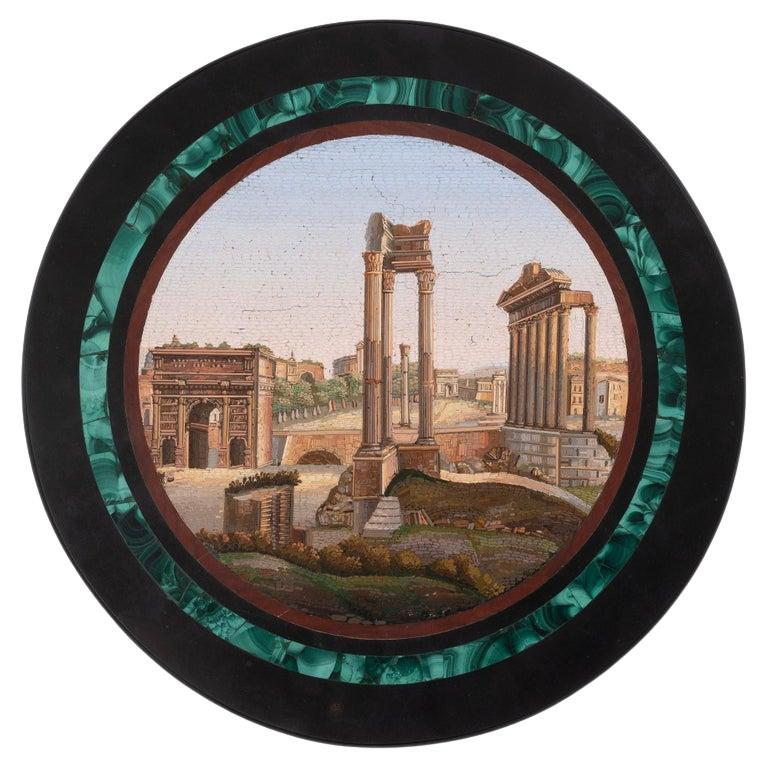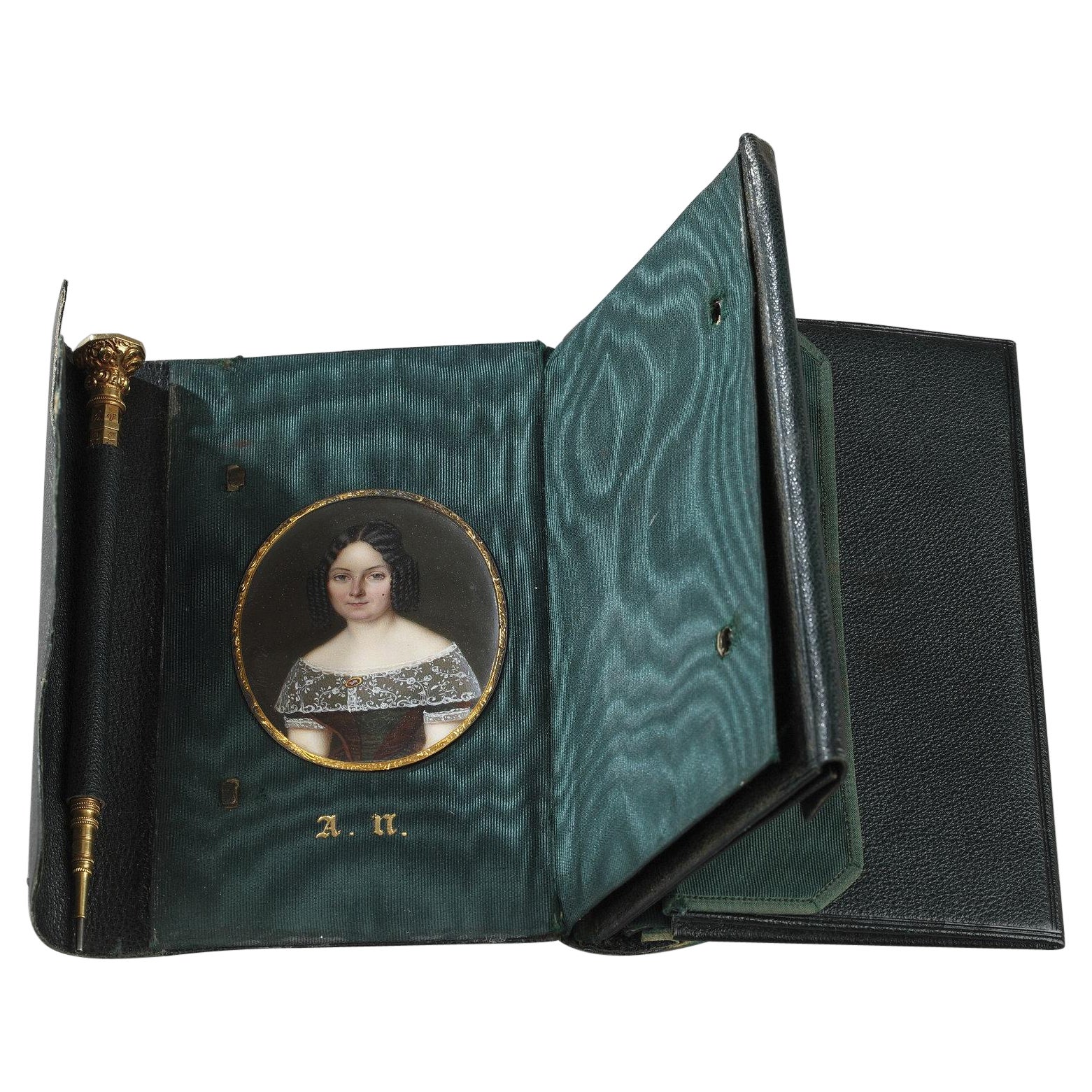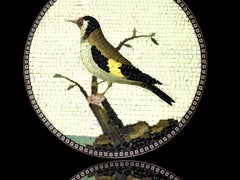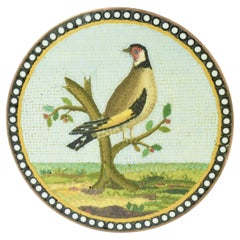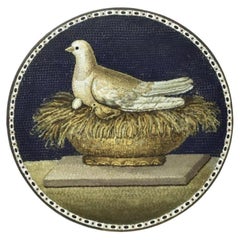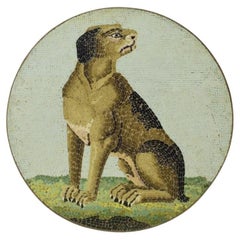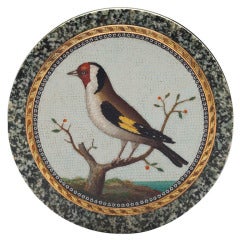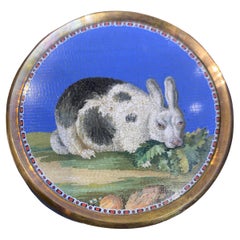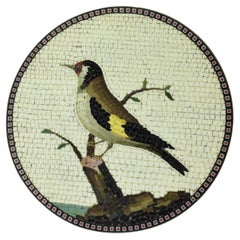
Micromosaic Plaque of the Goldfinch, signed and dated by Giacomo Raffaelli, 1784
View Similar Items
Want more images or videos?
Request additional images or videos from the seller
1 of 8
Micromosaic Plaque of the Goldfinch, signed and dated by Giacomo Raffaelli, 1784
$24,000List Price
About the Item
About the Seller
5.0
Recognized Seller
These prestigious sellers are industry leaders and represent the highest echelon for item quality and design.
Gold Seller
Premium sellers maintaining a 4.3+ rating and 24-hour response times
Established in 1979
1stDibs seller since 2011
671 sales on 1stDibs
Typical response time: 3 hours
Authenticity Guarantee
In the unlikely event there’s an issue with an item’s authenticity, contact us within 1 year for a full refund. DetailsMoney-Back Guarantee
If your item is not as described, is damaged in transit, or does not arrive, contact us within 7 days for a full refund. Details24-Hour Cancellation
You have a 24-hour grace period in which to reconsider your purchase, with no questions asked.Vetted Professional Sellers
Our world-class sellers must adhere to strict standards for service and quality, maintaining the integrity of our listings.Price-Match Guarantee
If you find that a seller listed the same item for a lower price elsewhere, we’ll match it.Trusted Global Delivery
Our best-in-class carrier network provides specialized shipping options worldwide, including custom delivery.More From This Seller
View AllGiacomo Raffaelli signed & dated 1784, Rare Micromosaic Plaque of the Goldfinch
Located in Aspen, CO
Very rare 18th century micromosaic plaque of the Goldfinch. This circular plaque is 3 inches in diameter, the micromosaic is set in copper. On the verso, the piece is signed in cursi...
Category
Antique 1780s Italian George III Brooches
$19,160 Sale Price
20% Off
Free Shipping
18th Century Micromosaic of a Goldfinch, c. 1790, attributed to G. Raffaelli
Located in Aspen, CO
18th Century micromosaic plaque of a Goldfinch, Rome, c. 1785, attributed to Giacomo Raffaelli (1753-1836). A micromosaic plaque of a goldfinch, looking left, perched on a red flowering tree branch, two inches in diameter. The ground line is parallel and low. The foreground is of different colors of grass and fallen berries and leaves. The background is a light blue with parallel lines of square tesserae. The goldfinch has both square and oblong tesserae as does the foreground. The border of a decorative pattern in white in black circles and further with a rim of yellow oblong tesserae create a colorful frame for this well executed micromosaic which is backed with copper.
There is a pinstem and "c" clasp (this type of clasp is seen both in the 18th and 19th centuries), both are not gold. This assembly could have been put on at the time of purchase or slightly later so the plaque could be worn as a brooch.
We have dated this piece as being at the end of the 18th century and attributed to Giacomo Raffaelli. This micromosaic has all of the established 18th century characteristics of micromosaics executed by Giacomo Raffaelli: 1. Each tesserae possesses one color. 2. The tesserae are either oblong or square. 3. The background is parallel horizontal rows of square tesserae, and 4. The addition of an identical border or millefiori around the edge. See page 32 of "The Gilbert Collection Micromosaics by Jeanette H. Gabriel. Philip Wilson Publishers.
Giacomo Raffaelli (1753-1836) is one the most important artists of micromosaics, his signed pieces are almost nowhere to be found - unless in museums and important collections of the world. We know of nine that exist in the world. Two in the Hermitage, two in the renowned Gilbert Collection, one in the British Museum, three held by different companies in the trade, and one held by Pierre/Famille ( for sale on this platform). Raffaelli was considered the finest mosaicist in Rome. Indeed, when Napoleon I wanted to sponsor a mosaic version of The Last Supper, in roughly 1810, he chose Raffaelli, this too added much to his fame.
A very similar plaque, also attributed to Raffaelli, can be seen in the above referenced book on page 56. This plaque is part of The Gilbert Collection. The permanent collection is on view at the Victoria & Albert Museum in London.
Raffaelli is known for his very realistic depictions of birds - especially the Goldfinch. While his naturalism is among the finest of mosaicists at this time, Raffaelli chose to display his extraordinary talent featuring the goldfinch in many of his works.
Raffaelli was probably aware of the significance of the goldfinch to the Catholic Church. Afterall, it is one of the most poignant stories in the Passion of Christ. On the road to Golgotha, Christ was forced to carry the cross upon which he would be crucified. He was also made to wear a brutal crown of thorns. It was said that a simple Goldfinch, having alighted on the Savior's shoulder, flew to his head and plucked a thorn that had been making Christ bleed; whereupon this blood was transferred to the finch, which to this day, still wears it. This is but one example as to how mosaics permitted the Church to teach important lessons or parables. Why was this not done by traditional art forms such as paintings? Why was this done instead by mosaics?
From its initial conception at approximately 319 AD, the Church sought to locate St. Peter's Basilica at the site of the apostle's martyrdom. On its face such a decision would seem rational, if not appropriate.
St. Peter however was executed in a marshy area on a side of the Tiber in the already quite humid city of Rome. Housed in the early St. Peters with its exposure for so many centuries of very high humidity most of the Basilica's artwork was beyond the help of the rudimentary preservation and restoration of the period. By about 1750 to which the "new" St. Peters dates it had therefore lost many oil and watercolor paintings as well as wood, bone, and tortoise sculptures, frames and other artifacts.
What could the Church do? Enter the "new" age of Roman micromosaics in which tiny pieces of colored stone or glass when set with grout would prove to be impervious to the debilitating effects of humidity.
By the early 1700's the Church would begin the process of establishing a school of instruction in mosaics. It would sponsor research and experimentation in developing especially glass tesserae and would encourage students to select damaged oils, paintings or watercolors as appropriate subjects for duplicative efforts in micromosaics.
Gifted instructors and successful students both frequently had their work promulgated by the Church. And it was from this pool of recently praised practitioners that fame, and special commissions paralleled each other.
By about 1780 one mosaicist in particular separated himself from most all the others. Giacomo Raffaelli became one of the most feted mosaicists in all of Rome. Indeed when Napoleon I wanted to sponsor a mosaic version of the Last Supper in roughly 1810 he chose Raffaelli. This selection itself added to the already high reputation of Raffaelli.
This micromosaic is in very good condition and probably executed by one of the greatest of mosaicists of all time, and done on a work of art symbolically significant to the early Catholic Church.
We have one of the largest collections of micromosaics offered for sale. If our reader is searching for a particular motif, we would be happy to list it here for your consideration. From very large wall hangings...
Category
Antique 1790s Italian Georgian Brooches
18th Century Micromosaic, Rome, c. 1795, Attributed to G. Raffaelli
Located in Aspen, CO
18th century micromosaic of a turtle dove on her nest with a chick, attributed to Giacomo Raffaelli.
To see a similar plaque, signed and dated Giacomo Raffaelli, 1791; see: Aste Bolaffi Auction House, lot 324, May 31, 2023, Torino Italy.
Birds were a popular motif in micromosaics in the last quarter of the 18th century and into the early 19th century. This mosaic is well executed with fine detail as seen in the shading. Little effort had been made in the dark background to follow the contour of the dove's silhouette, instead keeping the tessera in horizontal rows with square tesserae. The decorative border or millefiori of three colors around the edge create a colorful frame to this delightful scene.
All of these characteristics date this plaque as being late 18th century and most likely executed by Giacomo Raffaelli. For more detailed information, see page 32 of "The Gilbert Collection Micromosaics by Jeanette H. Gabriel. Philip Wilson Publishers. The reader will see the characteristics unique to Raffaelli. Jeannette Gabriel is considered a foremost expert in the work of Raffaelli, and was a statically important participant in the management, development and analysis of the Gilbert Collection. Her observations relative to the work of Raffaelli are therefore quite credible by art historians
This micromosaic is 2 5/8th inches in diameter, and backed in copper which is typical of plaques made at this time. This plaque was probably set onto a box of some sort as it has a glue like substance on the verso, which can be removed. We have chosen to keep this as it came to us, and in an effort to be careful, we have made no effort to remove it.
We have one of the largest collections of micromosaics offered for sale. If our reader is searching for a particular motif, we would be happy to list it here for your consideration. From very large wall hangings...
Category
Antique 1790s Italian Georgian Desk Accessories
$11,120 Sale Price
20% Off
Free Shipping
18th Century Micromosaic Plaque, possibly by G. Raffaelli, c. 1780
Located in Aspen, CO
18th century micromosaic plaque of a dog looking right. The sparse but interesting vegetation in the foreground, the light blue background set with horizontal oblong or square tesserae, each tessera comprising one color, and a low ground line are all hallmarks of 18th century micromosaics. Also, the gaps between the tesserae are not filled in and there is limited color range and little modelling. For more information on 18th century micromosaics, see: The Gilbert Collection Micromosaics. Jeanette Hanisee Gabriel. Philip Wilson Publishers.
Set on copper, the diameter is 2.75 inches.
One could make a strong argument that this micromosaic was probably Giacomo Raffaelli; however to be conservative we would say it is possible.
The image of a seated dog (a large mastiff) on grass, gazing into the distance was a popular motif during this time period; and, as many art historians have thought this motif possibly may have originated with Giacomo Raffaelli, who had seen this dog in a wall painting in an ancient ruin in Italy.
Giacomo Raffaelli (1753-1836) is one the most important artists of micromosaics, his signed pieces are almost nowhere to be found - unless in museums and important collections of the world. We know of nine that exist in the world. Two in the Hermitage, two in the renowned Gilbert Collection, one in the British Museum, three held by different companies in the trade, and one held by Pierre/Famille ( for sale on this platform). Raffaelli was considered the finest mosaicist in Rome. Indeed, when Napoleon I wanted to sponsor a mosaic version of The Last Supper, in roughly 1810, he chose Raffaelli, this too added much to his fame.
This micromosaic plaque is in fine condition.
We have one of the largest collections of micromosaics offered for sale. If our reader is searching for a particular motif, we would be happy to list it here for your consideration. From very large wall hangings...
Category
Antique 1780s Italian Georgian Brooches
$11,200 Sale Price
20% Off
Free Shipping
18th Century Micromosaic Plaque of a Bluebird, attributed to G. Raffaelli.
Located in Aspen, CO
18th Century micromosaic plaque of a bluebird, Rome, c. 1785, attributed to Giacomo Raffaelli (1753-1836). A micromosaic plaque of a blue bird perched on a flowering tree branch, 2.25 inches in diameter. The ground line is parallel and low. The foreground green grass with a brown rock in the front. The background is a creme color with parallel lines of square tesserae. The bird has both square and oblong tesserae as does the foreground. The border of a decorative pattern with three colors with a red circle or dot in a white square on blue. Like most plaque done at this time, it is backed with copper. There is a black substance or adhesive which, centuries ago, could have been applied to adhere this plaque on a box or in a frame. We have chosen to keep this as it came to us, and in an effort to be careful, we have made no effort to remove it.
We have dated this piece as being the last quarter of the 18th century, and attributed to the master mosaicist Giacomo Raffaelli. This micromosaic has all of the established 18th century characteristics of micromosaics executed by Giacomo Raffaelli: 1. Each tesserae possesses one color. 2. The tesserae are either oblong or square. 3. The background is parallel horizontal rows of square tesserae, and 4. The addition of an identical border or millefiori around the edge. For more detailed information, see page 32 of "The Gilbert Collection Micromosaics by Jeanette H. Gabriel. Philip Wilson Publishers.
Raffaelli is known for his very realistic depictions of birds. His naturalism and use of colors is among the finest of mosaicists at this time. Raffaelli became one of the most feted mosaicists in all of Rome. Indeed when Napoleon I wanted to sponsor a mosaic version of the Last Supper in roughly 1810 he chose Raffaelli. This selection itself added to the already high reputation of Raffaelli.
This micromosaic is in very good condition and probably executed by one of the greatest of mosaicists ever and, who is thought by art historians to be the first creator of modern mosaics in the late 18th century.
We have one of the largest collections of micromosaics offered for sale. If our reader is searching for a particular motif, we would be happy to list it here for your consideration. From very large wall hangings...
Category
Antique 1780s Italian Georgian Brooches
$10,400 Sale Price
20% Off
Free Shipping
Art Deco Desk Clock by Jaeger-LeCoultre, C. 1925
By Jaeger-LeCoultre
Located in Aspen, CO
Jaeger LeCoultre Art Deco clock measuring 8 5/8th by 7 1/8th inches, this is likely a one and only example of an Art Deco clock in polished stainless steel, with faceted pyramidal triangular onyx alternating with vivid red (not orange), triangular hard stone. The circular center of the clock consists of polished and faceted onyx. The clock itself sits on a smooth onyx plinth...
Category
20th Century Swiss Art Deco Desk Accessories
Materials
Onyx, Stainless Steel
You May Also Like
Giacomo Raffaelli Micromosaic Box
Located in Amsterdam, NL
An Italian green granite box, with a micromosaic mounted in a two-color gold chased border. Depicted is a goldfinch (carduelis carduelis) on a branch with berries and overlooking the Mediterranean. The scene is surrounded by a millefiori border. By Giacomo Raffaelli...
Category
Antique Early 19th Century Italian Georgian Boxes and Cases
Materials
18k Gold
Price Upon Request
18th Century Giacomo Raffaelli Micro Mosaic Rabbit Plaque
Located in New York, NY
18th Century Giacomo Raffaelli Micro Mosaic Rabbit Plaque
A micro mosaic depicting a fat rabbit eating leaves set in a wooden frame. Made by the late 18th century mosaicist Giacomo Raffaelli.
Signed on the reverse Giacomo Raffaelli, Roma 1794
Diameter of the micro mosaic: 2.25"
Measurements of the frame: 4.63" x 4.63"
Provenance: "Micromosaics Private Collections" by Janette Hanisee Gabriel, published by Brian McCarthy...
Category
Antique 1790s Italian Vanity Items
Micromosaic " Doves of Pliny " from " Vatican Studio " Sterling Silver Box
Located in Roma, IT
In this interesting sterling silver box, is set a micromosaic, depicting “ The doves of Pliny”, from a famous mosaic attributed to Sosus of Pergamon. He was a Greek mosaic artist of the second century BC. He is the only mosaic artist whose name was recorded in literature.
The original mosaic from Hadrian's Villa, now in the Capitoline Museums, depicts a group of doves on a round bowl. As described by Pliny, one dove is drinking while the others are sunning themselves. The Doves of Pliny, or the "Capitoline Doves...
Category
Antique 1850s Italian Boxes and Cases
Materials
Sterling Silver
Edwardian 1900 Agate Desk Seal In 18Kt Gold With The Arms of The Prince of Wales
Located in Miami, FL
Desk seal with the arms of the Prince of Wales.
Very rare and unusual desk seal, created in England during the Edwardian period, back in the early 1900's. This seal feature the arms of the Prince of Wales and is composed by the agate pommel, carved with smooth surfaces and the round mount setting crafted in yellow gold of 18 karats with scrolls decorations. The seal depicts three feathers aligned over a crown, carved with incised intaglio in natural white agate.
Gemstones: The handle pommel is carved from a single piece of brown translucent agate with bluish veins.
Weight: 14.95 Grams, (9.58 Dwt).
Measurements: 41 mm by 19 mm (1.61 x 0.75 Inches).
Hallmarks: No marks, electronically tested for 18 karats gold.
Arms of Prince of Wales
The Prince of Wales's feathers – Almost History
The coat of arms of the Prince of Wales is the official personal heraldic insignia of the Princes of Wales, a title traditionally granted to the heir apparent of the reigning monarch of the United Kingdom of Great Britain and Northern Ireland, formerly the Kingdom of Great Britain and before that the Kingdom of England. Since Edward I awarded it to his son the future Edward II, the heir apparent to the English throne has been created with the title Prince of Wales. The history of the coat of arms is closely linked with those of the Royal coat of arms of England and the Royal coat of arms of the United Kingdom. However, as the noted antiquarian and heraldist Charles Boutell wrote in 1863, "The Arms of the Prince of Wales have a distinct individuality of their own, with which nothing ought to be directly associated".
History
The badge has no connection with the native Princes of Wales. Its use is generally traced back to Edward, the Black Prince (1330–1376), eldest son and heir apparent of Edward III of England. Edward bore (as an alternative to his differenced royal arms) a shield of Sable, three ostrich feathers argent, described as his "shield for peace", probably meaning the shield he used for jousting. These arms can be seen several times on his chest tomb in Canterbury Cathedral, alternating with his royal arms (the royal arms of King Edward III...
Category
Antique Early 1900s English Edwardian Desk Accessories
Materials
Agate, Gold, 18k Gold, Yellow Gold
$3,188 Sale Price
20% Off
Free Shipping
Signed Southwestern Santa Fe Sterling Silver Tazza by Buddy Lee Mossman
Located in Philadelphia, PA
A rare tazza or compote from the renowned Southwestern jewelry artist - Buddy Lee Mossman.
In sterling silver.
With a hand chased foot supporting a cross-...
Category
Late 20th Century American Modern Centerpieces and Tazzas
Materials
Sterling Silver
Montblanc Patron of the Art Edition Peter the Great Fountain Pen 4810 Box Papers
By Montblanc
Located in Simpsonville, SC
Crafted as part of Montblanc’s prestigious Patron of the Arts Collection, this Peter the Great 4810 Limited Edition fountain pen pays homage to the visionary Russian Tsar who moderni...
Category
Late 20th Century Desk Accessories
Materials
Gold, 18k Gold
Recently Viewed
View AllMore Ways To Browse
Must De Cartier Pen
Tiffany Sterling Pen
Tiffany Sterling Silver Pen
Tiffany And Co Sterling Silver Bookmark
Tiffany Ballpoint Pens
Art Deco Agate Clock
Cartier Fountain Pen
Joseph Saidian
Montegrappa Pens
Cartier Gold Pencil
Cartier Pen Yellow
Cartier Pencil
S T Dupont Pen
Mont Blanc Ballpoint
Montegrappa Fountain Pens
Tiffany And Co Sterling Silver Ballpoint Pen
Tiffany Silver Ballpoint Pen
Used Mont Blanc Ballpoint Pen
